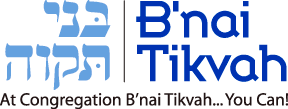Before we begin the Shema, we gather the four tzitzit of our tallit. The point at which we gather them is not random. We gather them when we read the words, “vahaviyenu l’shalom meyarba kanfot haaretz” “Gather us in peace from the four corners of the earth and lead us in dignity to our holy land.”
The idea here is that the tzitzit represent the commandments G-d wants us to follow. By gathering them right at that moment, we are symbolically saying, “We’ll do our part, G-d. You should do your part. We’ll gather from our four corners, you gather us from your four corners.”
We hold the tzitzit through the first two paragraphs of the shema, and then in the third paragraph, vayomer, which contains the command to wear tzitzit, we kiss the tzitzit every time they are mentioned.
We kiss them an additional time when we say the word emet, truth, at the end of the Shema—emphasizing that we can rely on G-d’s promise to return us to our land, because G-d is truth and G-d’s word is truth.
When it comes time to kiss and release the trzitzit, we do it at a seemingly odd time, in the middle of a sentence that doesn’t have anything to do with tzitzit. It’s when we say, “His teachings are alive and abiding and lasting and precious forever,” l’ad. Why then?
If you look carefully at the word l’ad, it includes the letters ayin and dalet, which together spell ed, witness. And if you look carefully at the beginning of the Shema, the very first line, there is an ayin at the end of the word shema and a dalet at the end of echad. In our prayerbooks—indeed, in the Torah itself—these letters are written larger than all the others. Because when we recite the Shema, we are serving as witnesses to the greatness and glory of G-d.
And the subtle message we are giving Hashem is that by keeping His promise and returning us to the Land, G-d will be serving as His own witness to His greatness and glory.
This is a message that served as an inspiration for our ancestors through many dark years of exile. It has special resonance for us this week, when we observed Yom Haatzmaut, Israel’s Independence Day, and reshit tzmichat geulateynu, the beginning of the flowering of our redemption, is writ large for all to see.
